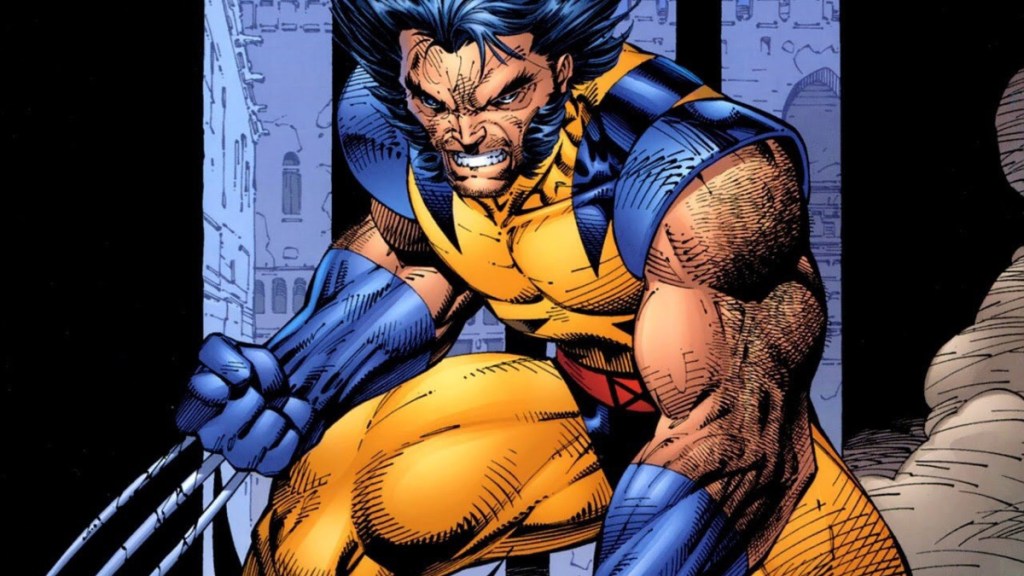Marvel Studios’ latest blockbuster brings one of the most significant materials from the comics into its cinematic universe through an entirely new origin story. Captain America: Brave New World finally delivers adamantium to the MCU, a metal traditionally associated with some of Marvel’s most brutal stories and dangerous characters, including Wolverine. While this legendary metal has been part of Marvel Comics for decades, its MCU debut creates an unexpected connection to the cosmic forces that shape this cinematic universe, tying together plot threads that began with Eternals while setting up future storylines that could reshape the MCU’s power dynamics. In doing so, the movie departs from Marvel Comics’ adamantium canon while still tackling some of the most critical aspects of the metal.
Videos by ComicBook.com
WARNING: Spoilers below for Captain America: Brave New World
The MCU’s version of adamantium emerges from one of the franchise’s most cataclysmic events. In Eternals, Earth narrowly avoided destruction when the Celestial Tiamut’s emergence was halted in the Indian Ocean, leaving behind a massive, partially-formed cosmic entity turned to stone. This event, which could have spelled humanity’s extinction, ironically became the source of unprecedented scientific advancement. The location, now known as “Celestial Island,” houses not only Tiamut’s petrified remains but also yields new resources that could revolutionize human technology. As Captain America: Brave New World explains, Japanese scientists first successfully refined adamantium samples from these cosmic remains, marking the beginning of a new technological era.
[RELATED: Captain America: Brave New World Review: The Winter Soldier’s Spiritual Successor ]
President Thaddeus Ross’s revelation about adamantium in Brave New World presents the metal as a game-changing discovery that could rewrite the rules of global technological supremacy. According to Ross, this extraterrestrial metal surpasses even vibranium in both strength and versatility. Its potential applications span multiple fields – from revolutionary medical procedures to advanced military technology – positioning it as a resource that could challenge Wakanda’s long-standing technological dominance. More importantly, Ross’s emphasis on international cooperation for adamantium’s distribution directly contrasts with Wakanda’s historically restrictive vibranium policies, suggesting a future where multiple nations could possess metal-based technology rivaling the African nation’s achievements.
Marvel Comics’ Adamantium Origin, Explained

The comic book history of adamantium tells a radically different story from the MCU, one deeply rooted in human ambition and World War II-era scientific advancement. During the war, American metallurgist Dr. Myron MacLain conducted extensive research for the U.S. military, driven by legends of an ancient Greek weapon – Hercules’ allegedly indestructible golden mace made of “Adamantine.” MacLain’s work led to an accidental breakthrough when, after falling asleep at his lab bench, the materials he was working with mysteriously bonded together in a process he could never replicate. This miraculous accident created what would later be classified as Proto-Adamantium, the strongest metal ever produced.
The U.S. government used this single sample to forge Captain America’s shield, combining steel, vibranium, and an unknown catalyst in a mixture that has defied all attempts at reproduction. The shield’s composition proved so unique that even beings capable of manipulating matter at the molecular level, like Molecule Man, found it more puzzling than cosmic artifacts such as Thor’s hammer or Silver Surfer’s board.
MacLain’s continued research eventually led to the development of True Adamantium, a slightly less durable but still nearly indestructible alloy. The creation process requires mixing specific chemical resins at temperatures of 1,500 degrees Fahrenheit, followed by a crucial eight-minute “flux period” before the metal sets permanently. Once hardened, True Adamantium becomes virtually indestructible, resisting manipulation even by beings of extraordinary strength. The exact formula remains a closely guarded U.S. government secret, making its production both rare and astronomically expensive.

[RELATED: Captain America: Brave New World Marks the End of the MCU’s Darkest Era]
The metal gained its most infamous application through the classified Weapon X program, which forcibly bonded adamantium to Wolverine’s skeleton and claws. This procedure was so complex and costly that few attempts to replicate it have succeeded. Interestingly, the process led to an unexpected discovery: Wolverine’s healing factor induced molecular changes in the metal, creating a variant called Adamantium Beta that could coexist with living bone tissue without inhibiting biological processes.
As demand for the metal grew, scientists developed Secondary Adamantium (also known as Adamantium Steel) as a more cost-effective alternative. While still incredibly strong, this version proved significantly less durable than its predecessor, capable of being damaged by beings of sufficient strength like Thor or the Hulk. This development helped explain various instances in Marvel Comics where the supposedly indestructible metal had been broken, while maintaining True Adamantium’s near-mythical status.
The fundamental difference between the MCU and comics versions of adamantium reflects Marvel Studios’ broader approach to adapting source material. While the comics presented adamantium as a human innovation born from wartime research and Greek mythology, Brave New World reimagines it as an alien material that could reshape Earth’s power dynamics. This change serves multiple narrative purposes in the MCU: It ties the metal’s origin to the MCU’s established cosmic mythology, creates potential for international conflicts over resource control, and also provides an organic way to introduce adamantium-based characters into the MCU as the metal becomes more widely available through Tiamut’s remains rather than through secret government programs.
This reimagining also positions adamantium as a potential successor to vibranium in the MCU’s narrative. Just as vibranium’s introduction through Wakanda sparked stories about technological advancement and resource politics, adamantium’s emergence from Celestial remains sets the stage for new conflicts. It’s a clever adaptation that honors the metal’s comic book significance while weaving it seamlessly into the MCU’s expanding scope.
Did you like Captain America: Brave New World‘s introduction of adamantium? Or do you prefer the Marvel Comics version? Let us know in the comments!








